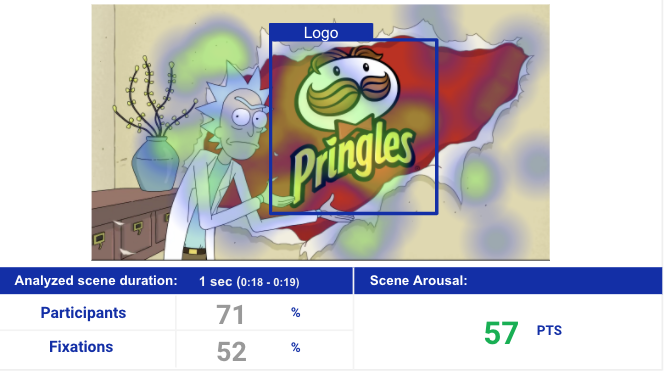A scientific approach can help brands and creative professionals reach new levels of success. While the more artistic types might follow their intuition and personal criteria, today’s attention spans, algorithms, and platforms require the winning combination of art and technology. Simply put, among thousands of options fighting for it, users know the value of their attention. For that reason, your audience will be loyal to your brand and product if you use all of the tools available to provide the very best content out there.
Among the tools that AI provides, eye-tracking is one of the most interesting and relevant for top brands. At Synapbox, eye-tracking is only one part of a holistic method that allows us to provide the most valuable insights to create attention-grabbing content. Let’s take a look at how it works and what kind of insights we have found:
What is Eye-tracking?
With the consent of hundreds of participants from around the globe, eye-tracking technology can offer qualitative and quantitative testing of your content’s performance in several areas: from branding and message to storytelling. In the midst of a pandemic, this scalable solution is convenient in more than one way, as it gives you remote access to results and insights in less than 48 hours.
So how does Visual Tracking work? First, we need to talk about heatmaps. Let’s say that you need to test the impact of your Ad for Instagram Stories and you’re not completely sure about the style of design and composition that works best. By tracking the eye movements of viewers as they look at your Ad, a heatmap will show you the most and least attractive areas of your image. This way, you can correctly place the relevant information or CTA with the help of accurate data, not intuition or convention.

Attention Score is another indispensable measurement, as it shows you your audience’s levels of concentration throughout a video. An Ad on Facebook, for instance, can show you the number of impressions or how many times your Ad was shown, but it cannot tell you if the person was distracted or truly visually engaged. Along with other measurements like Emotional Response, Synapbox’s holistic methodology lets you interpret your content’s performance with more metrics, precision and context.
Insights gathered with the use of Eye-tracking – Learnings from Youtube Ads
What are some of the insights we’ve found while working with clients? Take a look at some of the do’s and don’ts when it comes to videos, branded content and commercials, and how they relate to our categories of analysis.
Do’s:
– When it comes to Message Recall, one of the most important characteristics is simplicity. A clear, understandable plot generates more impact in the viewer.
– Humor is a great way to uplift your brand’s voice and message. We’ve found that more smiles means higher scores in all metrics, from Content Attributes to Attractiveness.
– Empathy is key for positive emotional performance. Ads that include a socially impactful topic recorded higher scores in Rational and Biometric responses.
Don’ts:
– Unnecessarily complex plots (and visual composition with too many elements) can overwhelm viewers and draw attention away from the most relevant information. Remember to keep it short and simple, as attention can decrease after 90 seconds.
– An informative Ad doesn’t have to be dull. Be mindful of balance between information and enjoyment: add humor, celebrities and catchy music in a natural way to improve Virality Scale and spread your message.
– Unrelatable characters can hurt your scores in Relevance and Purchase Intention. Make sure your stories, and the lifestyle situations of your characters, resemble the lifestyle of your target audience.
While studying these trends is helpful, the most valuable insights can be found in the thorough analysis of your brand’s content. Learn more about Synapbox.




